Boosting biodiversity and locking away more carbon from our atmosphere than forests, wetlands are ecosystems with incredible powers that need protection.
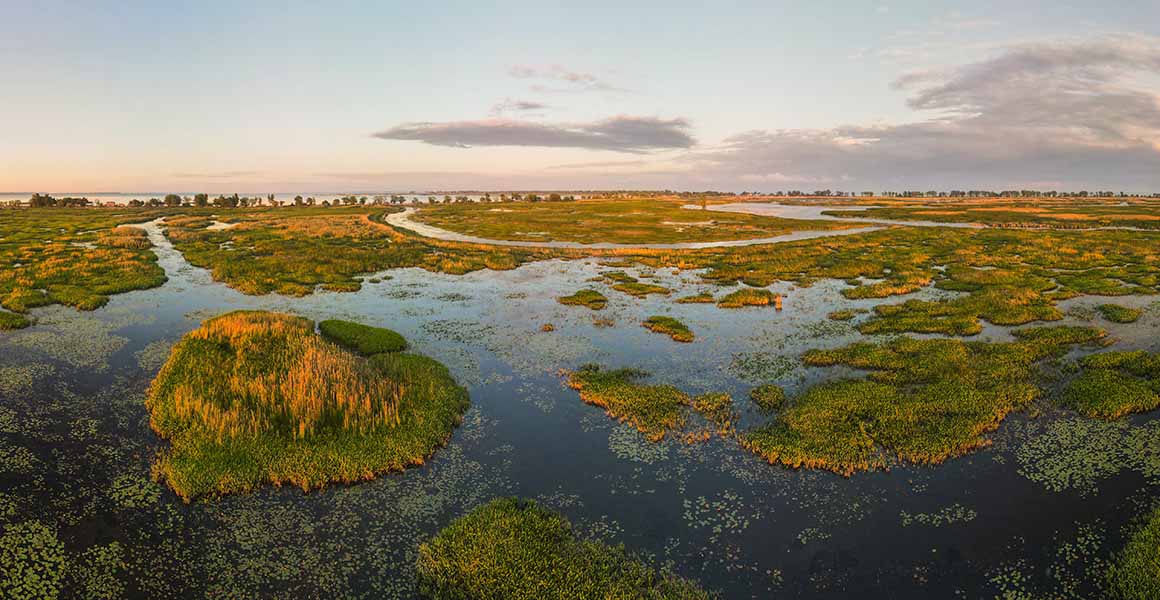
Wetlands come in many forms but they’re united by their ability to fight climate change and boost biodiversity. © Elena Berd/ Shutterstock
What is a wetland?
A wetland is an environment where the ground is covered by water for most of the year. What’s so special about that you might ask? Look a little deeper and you’ll discover the remarkable power hidden in these underappreciated ecosystems.
From bogs to swamps, wetlands are places shrouded in myth. Throughout human history, they were seen as dangerous places to be avoided and were said to be home to mystical creaturesopens in a new window. But we overlooked their true magic...
Over the centuries people began to view wetlands as an unproductive waste of space to drain to make way for agriculture and urban development. We’ve lost as much as 87% of the world’s wetlands since 1700opens in a new window – an alarming rate of loss even higher than that of global deforestation.
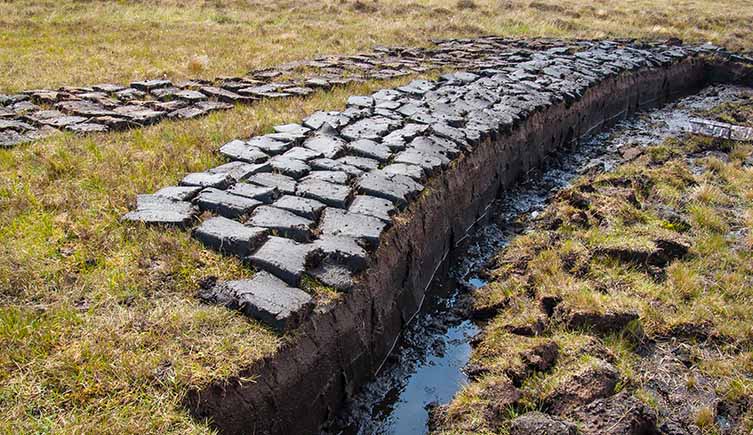
Much of our peatbogs have been drained for agriculture, forestry and urban development and harvested for peat, a carbon-rich substance burnt for fuel or incorporated into compost. © DrimaFilm/ Shutterstock
Why should we care?
Well, wetlands:
- lock away more carbon dioxideopens in a new window from our atmosphere than forests
- protect us from floods, wildfires, droughts and storms
- act as natural filters by removing pollutants from our wateropens in a new window
- provide a unique habitat for a range of plants and animals
But wetlands can only provide all these benefits if they’re intact. If we don’t look after them, we risk increased levels of carbon dioxide in our atmosphere, accelerated climate change and biodiversity loss.
So, how exactly do wetlands provide these benefits and how can we help protect them?
Peatlands: The carbon conquerors
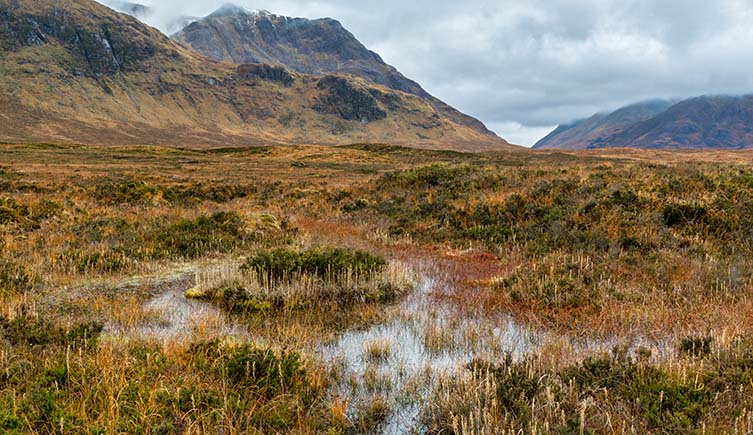
A peatbog located in Glencoe in the Scottish Highlands. © shawnwil23/ Shutterstock
Peatlands, such as bogs and fens, are a type of wetland that forms peat. A type of carbon-rich soil, peat is made from layers upon layers of dead plant material.
Katy Ross, a bog researcher working on her PhD at the University of Leicester with the UK Centre for Ecology & Hydrology and the Natural History Museum, explains how their carbon-trapping superpower works. It’s all to do with how the water in a bog keeps out the air.
“When bogs are wet there isn’t enough oxygen available for most bacteria to break down the peat,” explains Katy. “This means dead plant matter accumulates more quickly than it decomposes.”
“Plants like Sphagnum mosses take in carbon dioxide from the air as they grow. When they die, rather than releasing their carbon back into the atmosphere, the vegetation just builds up into a carbon-rich layer.”
As more layers are formed, they become compressed, forming peat. With enough time and the right conditions, this peat will eventually turn into coal.
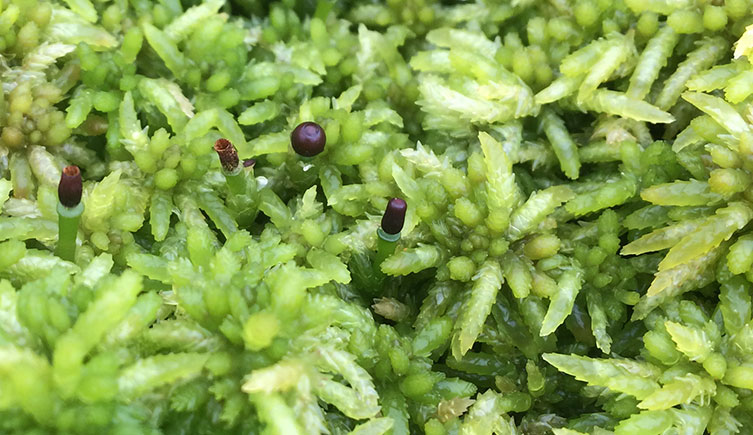
Sphagnum moss builds up in layers in bogs when it dies, slowly forming peat. © Katy Ross
Peatlands cover just 3% of Earth’s land surface but store an estimated 600 billion tonnes of carbon worldwideopens in a new window – much more than any other land ecosystemopens in a new window. However, the drainage and destruction of these carbon sinks means they’re at risk of becoming carbon sources.
Draining peatlands of their water introduces oxygen to the peat, accelerating the decomposition process. This releases all that stored carbon back into the air. These emissions contribute to 4% of all human-driven greenhouse gas emissions annuallyopens in a new window.
“Even if we stop any further drainage of peatlands, we still need to work to restore the ones we’ve damaged, as otherwise they will continue to emit carbon dioxide,” Katy explains. “To restore these systems, we need to bring water back into them.”
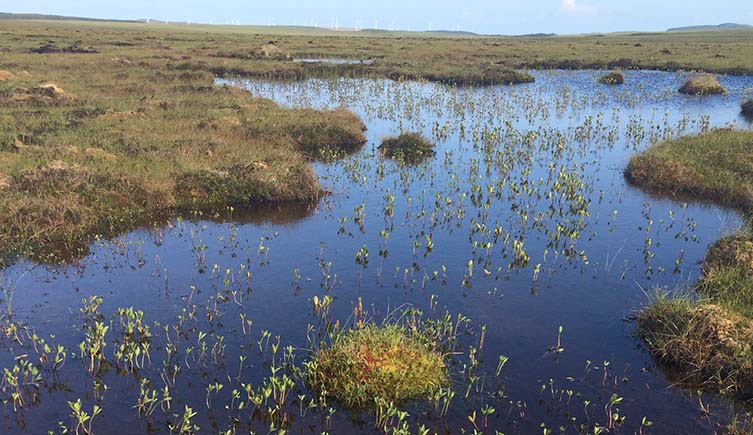
Bog bean plants growing in a bog pool in the Flow Country, Scotland, surrounded by mounds of sphagnum moss. © Katy Ross
The Flow Countryopens in a new window in the north of Scotland is one of the largest areas of blanket bog in Europe. “It’s an area that’s suffered from a lot of drainage for timber production,” says Katy. “Hopefully, by restoring these peatlands we can bring back an effective carbon store.”
Teams working to restore nature are removing trees planted for timber and damming drainage ditches to increase the water level. This is allowing peat-building moss to regrow and start capturing carbon.
Elsewhere in the UK, wetland restoration projects are teaming up with beavers – nature’s engineers. They build dams to slow the progress of rivers and streams, creating flooded areas that make up a complex wetland ecosystem that’s fantastic for biodiversity.
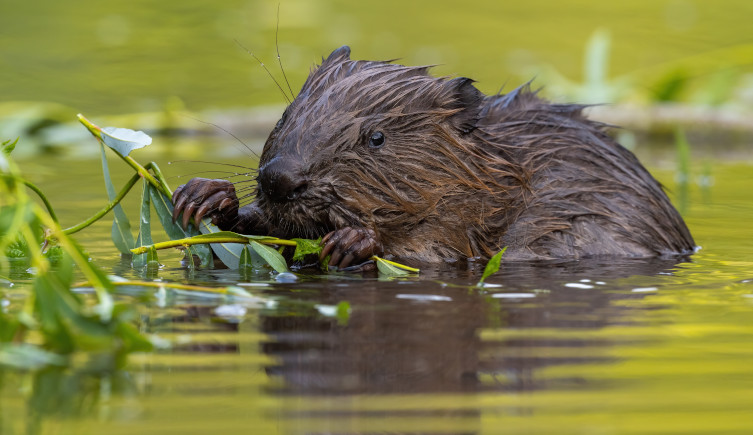
Beavers create wetlands by building dams and slowing the flow of water in an environment. They help to create diverse and abundant ecosystems. © WildMedia/ Shutterstock
Bogs: The biodiversity builders
You might imagine peatbogs to be barren landscapes, but Natural History Museum scientist Dr Sandy Knapp explains that these places are in fact teeming with life.
“All kinds of interesting plants and critters have adapted to live in these low-nutrient, acidic environments,” she remarks.
“For example, carnivorous plants, like sundew, are often found in peatland environments. In acid environments, nitrogen is quite low and carnivorous plants can capture and digest insects to get that nitrogen,” Sandy adds.
In the video, botanist Josh Styles discusses a conservation programme for carnivorous plants that became rare in England as peatbog habitats were drained and converted into agricultural land.
Mangroves: The coastal crusaders

Mangrove trees form coastal forests in tropical regions. © Mazur Travel/ Shutterstock
Mangroves are another climate-change-fighting wetland. These tropical, coastal forests grow in seawater. The trees have large, sprawling stilt roots that help them to resist the impact of waves and trap sediment between tides.
Mangroves are also brilliant at capturing and storing carbonopens in a new window. Dead roots and branches are quickly submerged by the sediment, locking carbon away rather than releasing it back into the atmosphere.
“Mangroves are amazing ecosystems that work as a buffer between the sea and the land,” explains Sandy. The roots form a permeable barrier that disperses the energy of waves, helping protect coastal communities from tropical storms and tsunamis.
The tangled network of roots also stabilises sediment, preventing coastal erosion. What’s more, Sandy says that “they act as fish nurseries and hatcheries for crabs, lobsters and all kinds of marine invertebrates”.
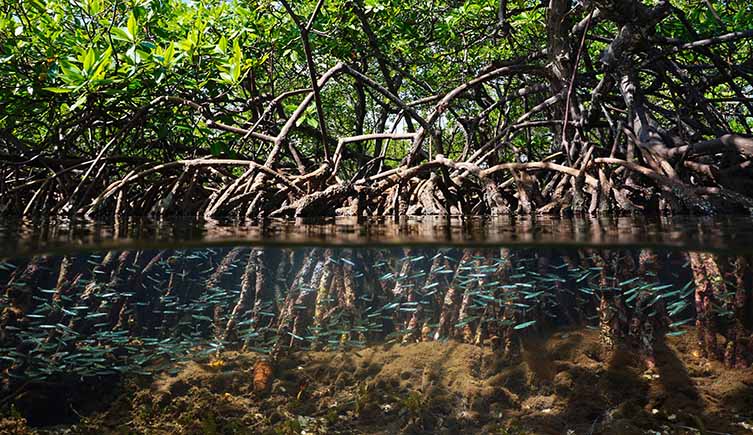
The interwoven roots of mangrove trees create a protective nursery habitat for a wide array of marine life. © Damsea/ Shutterstock
Sea-forestation
Mangrove restoration projects are taking place all over the world. The Global Mangrove Allianceopens in a new window has the ambitious goal of completely stopping all human-driven mangrove loss by 2030, whilst also reversing at least half of recent loss through supporting local restoration projects.
Mark Spalding, a senior marine scientist at the Nature Conservancy, believes that for these restoration projects to be successful, they must involve the local community and be nature led. Mangroves are fast-growing, opportunistic trees and so will bounce back if we let them.
If we restore these sea forests, they could even relieve some of our dependence on building expensive seawalls to protect us from coastal flooding.
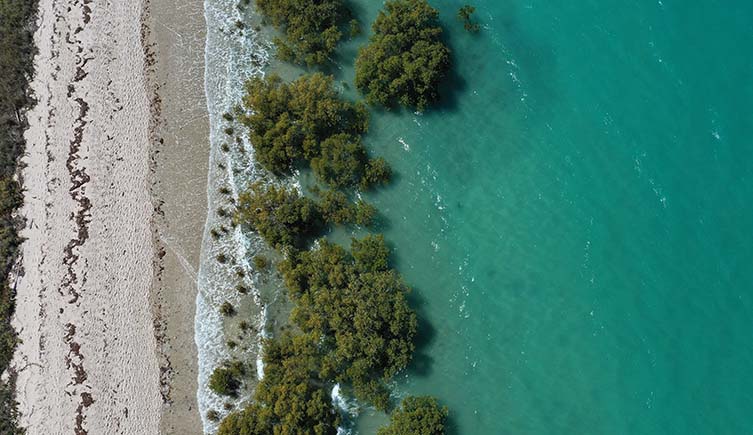
Mangrove trees form permeable barriers between land and sea that slow down waves and protect coastal communities. © ChameleonsEye/ Shutterstock
Mark explains that “a barrier of mangroves can reduce the height of the seawall on the inland side because the waves are lessened. So, you can spend a lot less on building walls and still protect your coast.”
“Another critical function which mangroves can do, that human-engineered structures can’t, is that they can rebuild themselves,” Mark adds.
Hear more about the incredible protective powers of mangroves in this episode of the Our Broken Planet podcast:
It’s crucial that we look to these nature-based solutions, like mangroves and peatlands, to make our environments more robust.
Time to turn the tide for wetlands
Wetlands are not just home to amazing plants and animals. Their unique superpowers protect us in so many other ways too, from capturing carbon to defending against extreme weather and boosting biodiversity. It’s now our turn to protect them, or we risk losing it all.

Find Your Climate Action
Use our tool to find actions that are good for you, your community and the planet.
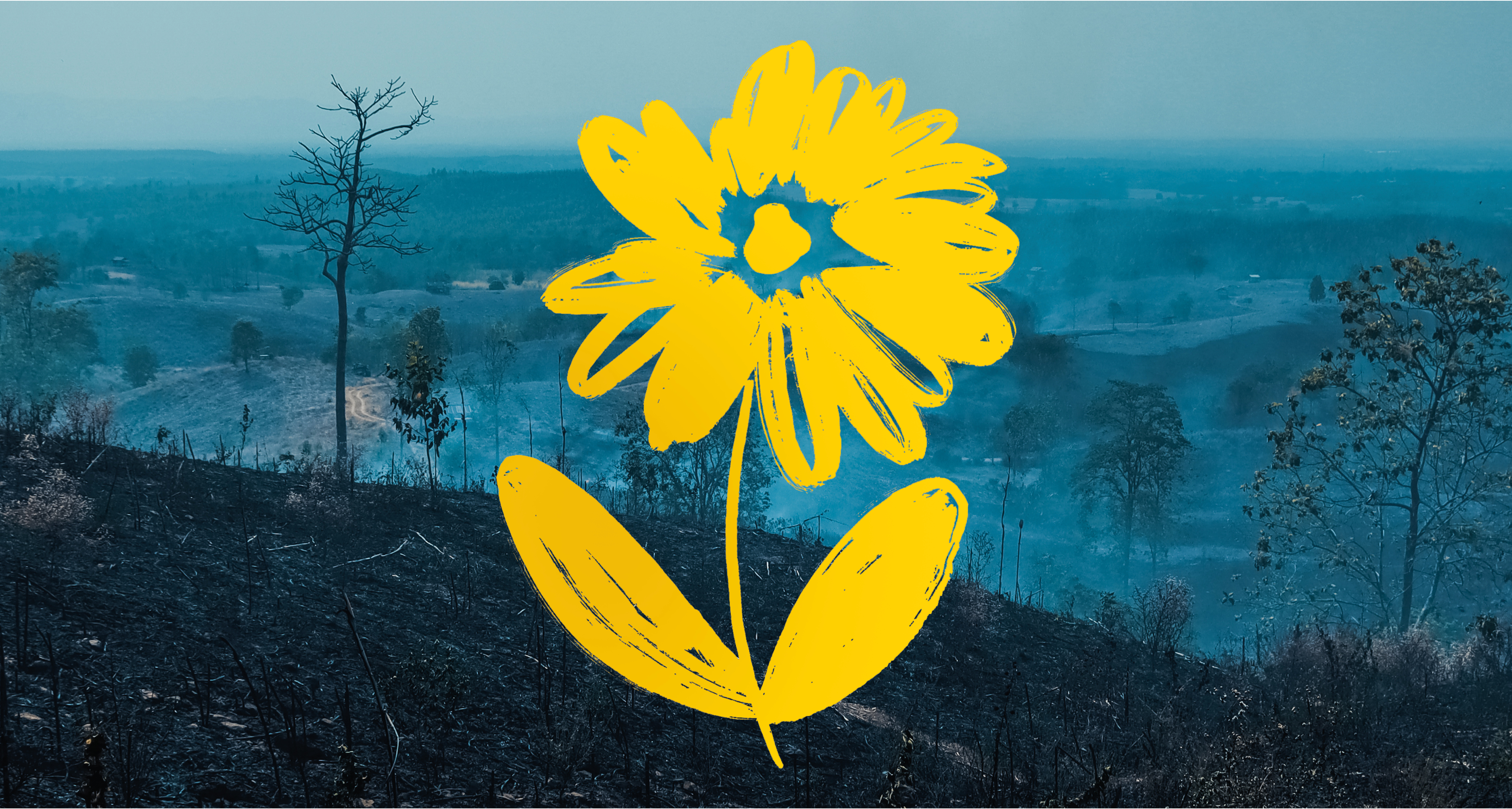
Fixing Our Broken Planet
Discover science-backed, hopeful solutions that will help us to create a more sustainable world.
New gallery open now.


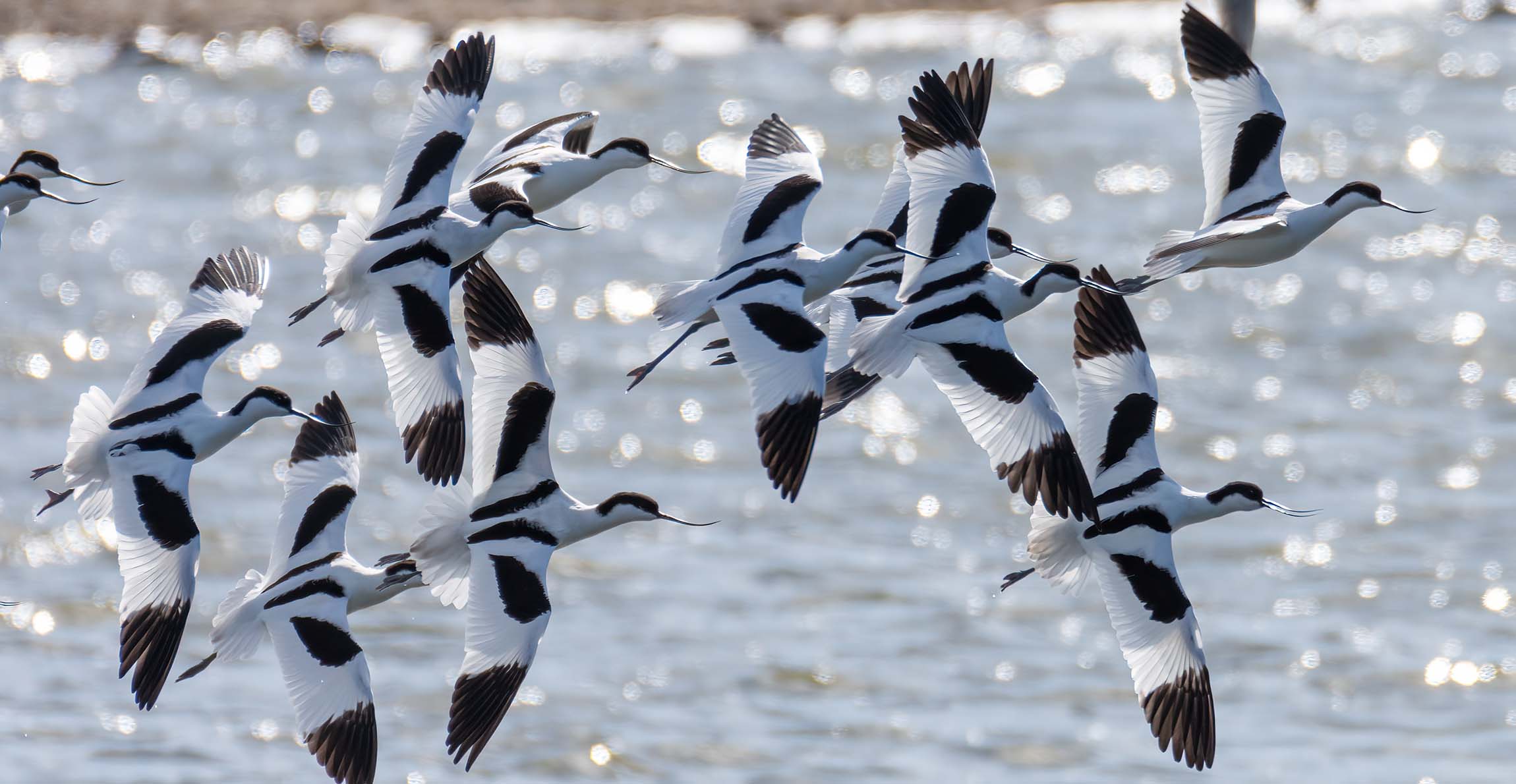
Join our community of planet fixers
Enter your email to get monthly tips on living sustainably as well as articles, events and information to help you become an advocate for our planet. We may occasionally include information about other parts of the Museum or third-party content from our corporate partners and other museums. We will not share your personal details with these third parties. You must be over the age of 13. Privacy notice.
Follow us on social media